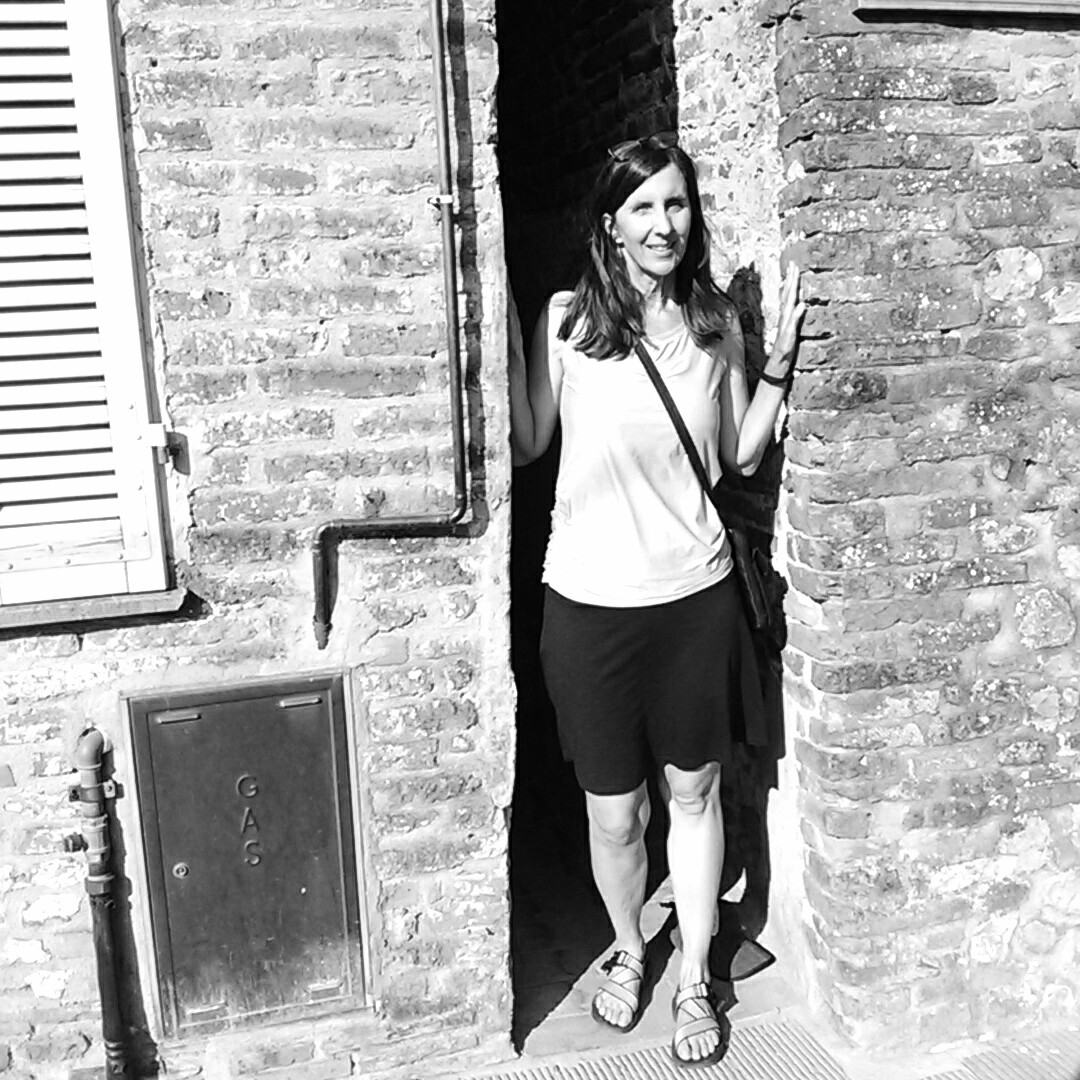The promised cooling trend has yet to take effect. A few thunderstorms played in the valley near Paciano yesterday, but these quickly dissipated and the day dawned bright, clear, and expected to be hot. The weather boffins were predicting a high temperature of 97 F.
Normally in this situation, we would try for an early departure so that we could put as many kilometers under our feet before the heat became intolerable. Today’s stage, however, was fairly short, and we didn’t want to arrive before our noon check-in time. The other factor was that our hotel breakfast wouldn’t begin until 8:30.
We further complicated matters by having a long chat with our host about the hotel business and the opportunities and pitfalls that emerge when soliciting tourist traffic. As it turned out, we didn’t head down the road until 9:30, which is now our record for late starts.
The road descended from Paciano, and then would spend the next ten kilometers simulating a roller coaster: some times we went up, other times down. Once again we were among olive groves, and other crops.
After a walk on a busier road, we turned off onto a gravel road. It ran past a field of cows. The flies, eager for fresh meat, swarmed me. Most unpleasant.
The gravel road narrowed to a single track through the trees, and we began to climb the long hill to Citta della Pieve. This is another stretch of the Via that could use some machete work, as the blackberry vines are weaving together to close the trail.
After a steep uphill section, we broke out on a plateau and caught our first view of the town.
There is considerable disagreement about the origins of Citta della Pieve. The name literally means “city of the parish church (Pieve).” Some scholars believe that there was a settlement here during the Etruscan period, others argue that people did not live here until much later. The Citta seems to have come into existence in the thirteenth century. When seen from the air, it is shaped like an eagle, the symbol of the German Emperor Henry II, who controlled this region when the town was founded. What stands today, a large collection of brick churches, palaces, and other town buildings, were all constructed as the Renaissance was beginning. The city has changed little since then, and it retains its late medieval character.
The "pieve" that gives the city its name is, today, the Duomo. Originally it was a parish church dedicated to the Milanese martyrs Protasius and Gervasius.
Today it holds two paintings by Perugino, the Renaissance artist who was born in the city.
After visiting the Duomo, Mary and I wandered through the winding alleys between the tall brick buildings. Citta Della Pieve was once a center of brick manufacturing for Tuscany and Umbria, so when the time came to build their own city, they had no shortage of materials. Among these alleys is Italy's narrowest alley, the Baciadonne (kiss the women). This alley is said to be so narrow, that a man leaning out a window on one side can kiss a woman on the other. We didn't have access to the windows to test this proposition, but it certainly seems plausible.
It is a fascinating and unexpectedly beautiful town.
Today's Distance: 15 KM
Total Distance: 992.1 KM





No comments:
Post a Comment